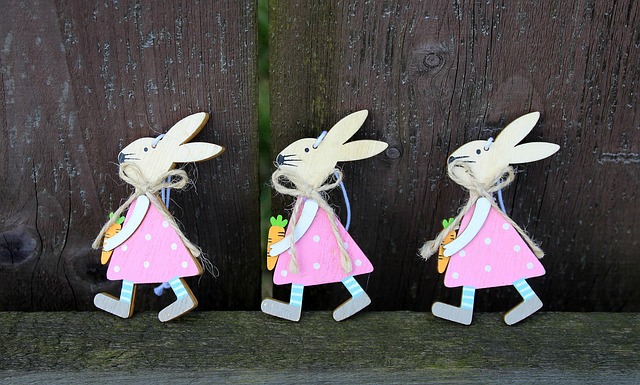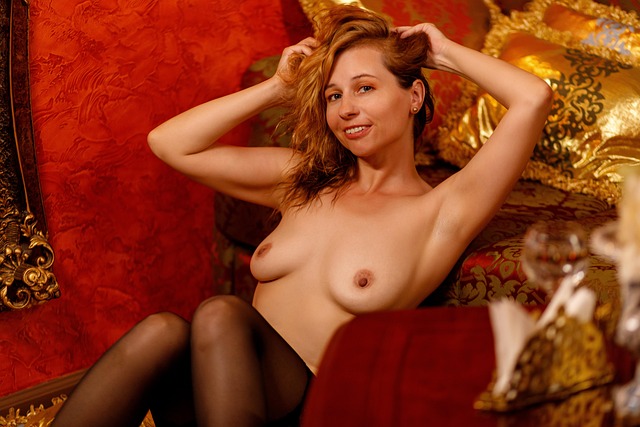custom perfume blending
Custom Perfume Blending: Crafting Aromatic Experiences
Introduction
Welcome to an exploration of the art and science behind custom perfume blending, a dynamic industry that has captivated perfumers, entrepreneurs, and aromatherapists worldwide. In this comprehensive guide, we will delve into the intricate process of creating personalized fragrances, its historical roots, global impact, economic significance, and the challenges it faces. By the end, readers will grasp the multifaceted world of custom perfume blending and its potential to transform personal and communal sensory experiences.
Understanding Custom Perfume Blending: Unveiling the Basics
Custom perfume blending is a meticulous process where skilled artisans combine various fragrance notes, or ingredients, to create unique scents tailored to individual preferences or specific applications. This practice involves a blend of traditional perfumery techniques and modern innovations, allowing for endless possibilities in aromatic expression. At its core, custom blending revolves around four primary components:
-
Fragrance Notes: These are the building blocks of any perfume composition. Notes can be natural extracts from plants, flowers, fruits, or synthetic compounds that mimic natural aromas. They fall into three main categories: top (initial scent), heart (dominant middle note), and base (long-lasting foundation).
-
Blending Techniques: Perfumers employ various methods to mix and blend notes, such as traditional hand blending, modern digital mixing software, or a combination of both. Each technique offers unique advantages, allowing for precise control over scent profiles.
-
Personalization: The heart of custom perfume blending lies in tailoring fragrances to meet specific needs or desires. This may involve creating scents for individual preferences, targeted therapeutic effects, or to evoke particular emotions and memories.
-
Application: Perfumes can be formulated for diverse purposes, including personal use, aromatherapy, cosmetics, home fragrances, and even industrial applications. Each application requires a tailored blend to ensure optimal effectiveness and user experience.
Historically, perfumery has a rich heritage dating back thousands of years. Ancient civilizations like Egypt, Greece, and China valued aromatic substances, using them in rituals, medicine, and daily life. The art of blending fragrances evolved over centuries, with significant advancements during the Renaissance and Industrial Revolution. Today, custom perfume blending stands as a modern interpretation of this ancient craft, leveraging advanced tools and a deeper understanding of aromatics to create highly personalized scents.
Global Impact and Trends: A World of Aromatic Diversity
The influence of custom perfume blending is a global phenomenon, with distinct regional variations and trends shaping its development. Here’s a glimpse into some key areas:
-
North America: The United States and Canada have a thriving custom perfume industry, driven by a growing demand for personalized fragrances. Online platforms and social media play a significant role in trendsetting, allowing independent perfumers to reach global audiences.
-
Europe: France, Italy, and the UK are renowned for their rich perfumery heritage. Custom blending has gained popularity as artisanal and niche perfumes become increasingly sought-after, with many European countries hosting dedicated events and festivals celebrating aromatic craftsmanship.
-
Asia Pacific: Japan and South Korea lead the way in innovative fragrance technologies, offering advanced digital tools for custom blending. The region’s vibrant beauty industry has fueled the demand for personalized cosmetics and home fragrances.
-
Middle East: This region is known for its rich traditional perfumery, with a focus on exotic ingredients and bold scents. Custom blending has allowed local artisans to blend modern trends with ancient techniques, creating unique, globally appealing fragrances.
Global trends reveal several notable patterns:
| Trend | Description |
|---|---|
| Personalization | A growing desire for tailored scents that reflect individual identities and preferences. |
| Sustainability | Increasing demand for natural, ethically sourced ingredients and environmentally friendly practices. |
| Niche Market Growth | A rise in artisanal, handcrafted perfumes appealing to niche audiences who appreciate quality and uniqueness. |
| Digital Innovation | The integration of technology into blending processes, offering precision and accessibility to a wider audience. |
Economic Considerations: A Scented Industry in Motion
The economic landscape of custom perfume blending is dynamic and multifaceted, with various factors influencing its growth and development. Here’s an overview:
-
Market Size: The global perfumery market, including custom blending, is substantial, estimated at over $200 billion in 2021. This market is projected to grow at a CAGR of approximately 5% during the forecast period (2022-2030), driven by increasing disposable incomes and a growing preference for premium, personalized products.
-
Investment Patterns: Independent perfumers and start-ups are attracting significant investment from venture capitalists and angel investors who recognize the potential for disruptive innovation in the industry. This funding supports research, development, and marketing efforts to bring unique custom blends to market.
-
Cost Structure: The cost of creating a custom perfume varies widely depending on factors such as ingredient quality, complexity of the blend, and application. On average, crafting a high-quality, complex fragrance can range from $50 to $500 per ounce, with bespoke or artisanal blends commanding premium prices.
-
Revenue Streams: Perfumers generate revenue through direct sales to consumers, wholesale partnerships with retailers, licensing agreements for branded fragrances, and custom orders for niche clients. Online platforms have democratized access to this industry, allowing independent perfumers to reach global audiences.
Technological Advancements: Revolutionizing the Blending Process
Technology plays a pivotal role in modernizing custom perfume blending, enhancing efficiency, precision, and accessibility. Here are some significant advancements:
-
Digital Blending Software: Advanced software platforms enable perfumers to create, mix, and adjust fragrances virtually. These tools offer a wide range of ingredients, precise control over ratios, and the ability to simulate scent profiles before physical blending.
-
3D Printing: 3D printing technology is revolutionizing custom blending by allowing for the rapid production of fragrance samples. Perfumers can quickly test different combinations, saving time and resources. This method also enables the creation of intricate, complex blends that were previously time-consuming to produce.
-
Sensor Technology: Advanced sensors can analyze and detect subtle differences in fragrance notes, providing precise data on scent profiles. This technology ensures consistency and quality control during the blending process.
-
Online Platforms: E-commerce platforms dedicated to perfumes offer a wealth of information, virtual consultations, and easy access to a wide range of ingredients. They enable perfumers to connect with customers worldwide and provide a platform for amateur and professional blending enthusiasts.
Policy and Regulation: Navigating the Legal Scented Landscape
The regulatory environment surrounding custom perfume blending varies across jurisdictions but is crucial in ensuring product safety, quality, and consumer protection. Here’s an overview of key considerations:
-
Ingredient Regulations: Many countries have strict regulations on the use of specific fragrance ingredients, especially those derived from plants or animals. These regulations cover issues like sustainability, ethical sourcing, and potential allergens. Perfumers must stay updated on these guidelines to ensure compliance.
-
Product Labeling: Clear and accurate labeling is mandatory in most regions to inform consumers about the ingredients, potential allergens, and other relevant information. This ensures transparency and enables users to make informed choices.
-
Safety Standards: Safety is paramount in perfumery. Regulatory bodies set guidelines for maximum permissible levels of certain compounds to ensure consumer safety. Perfumers must adhere to these standards during blending and formulation processes.
-
Intellectual Property Rights: Protecting proprietary blends and fragrances is essential for businesses. Trademarks, copyrights, and patents provide legal safeguards, enabling perfumers to safeguard their creations and maintain brand identity.
Challenges and Criticisms: Overcoming Barriers to Blending Excellence
Despite its allure, custom perfume blending faces several challenges and criticisms that must be addressed to ensure the industry’s growth and sustainability. Here are some key issues:
-
Lack of Standardization: The absence of standardized practices and quality control measures across the industry can lead to inconsistent product quality. This challenge is particularly evident in the realm of online, do-it-yourself blending kits, where results may vary greatly.
-
Ingredient Sourcing and Sustainability: Ensuring ethical and sustainable sourcing of fragrance ingredients, especially natural extracts, remains a concern. The industry must address issues related to overharvesting, deforestation, and the environmental impact of ingredient acquisition.
-
Allergens and Sensitivities: Fragrances contain various compounds that can trigger allergies or sensitivities in some individuals. While regulations help mitigate risks, perfumers must remain vigilant in testing and disclosing potential allergens to ensure user safety.
-
Education and Training: The art of perfume blending requires a blend of creativity and technical skill. Insufficient training and education in this field may lead to subpar products. Addressing this gap through workshops, courses, and mentorship programs can enhance the industry’s overall quality.
To overcome these challenges, industry stakeholders should consider the following strategies:
- Implementing standardized quality control measures for custom blends, particularly in online sales channels.
- Promoting sustainable sourcing practices and transparency in ingredient trails.
- Encouraging responsible disclosure of potential allergens and providing education on fragrance safety.
- Investing in training programs to enhance the skills of perfumers and ensure industry growth.
Case Studies: Real-World Success Stories
Let’s explore a few case studies that highlight successful applications of custom perfume blending, showcasing its versatility and impact:
Case Study 1: Niche Perfumery for Luxury Retail
Company: Aromia Fine Fragrances
Aromia is a boutique perfumery based in Paris, France, specializing in creating bespoke fragrances for high-end fashion houses and luxury retailers. They work closely with clients to develop signature scents that reflect the brand identity and target audience. By combining traditional techniques with modern technology, Aromia has established itself as a leading niche perfumer.
Key Success Factors:
- Custom blending expertise tailored to specific client needs.
- Utilization of rare, high-quality ingredients sourced globally.
- Advanced digital tools for precise scent simulation and testing.
- Strong relationships with fashion designers and luxury brands.
Case Study 2: Personalized Fragrances for Health and Wellness
Company: Aura Essences
Aura Essences is an American startup that offers personalized aromatherapy fragrances designed to enhance well-being and mood. Their online platform allows users to create unique blends with therapeutic properties tailored to individual preferences and needs.
Key Success Factors:
- User-friendly online blending tool with educational content on aromatherapy.
- Focus on natural, ethically sourced ingredients with therapeutic benefits.
- Subscription model providing regular refills and personalized recommendations.
- Targeting health-conscious consumers with an interest in holistic wellness.
Case Study 3: Sustainable Perfume Blending for Mass Market
Company: EcoScent Innovations
EcoScent Innovations is a Canadian company at the forefront of sustainable perfumery practices. They create fragrance ingredients using innovative, eco-friendly processes, ensuring minimal environmental impact while maintaining high-quality standards. Their goal is to make custom blending accessible and affordable for the mass market.
Key Success Factors:
- Patented green synthesis methods reducing water usage and waste.
- Collaboration with scientific researchers to develop sustainable ingredients.
- Transparency in ingredient sourcing and manufacturing processes.
- Affordable pricing strategies targeting mainstream consumers.
Future Prospects: A Scented Horizon of Opportunities
The future of custom perfume blending is brimming with potential, shaped by emerging trends and technological advancements. Here’s a glimpse into what lies ahead:
-
Personalization on Demand: The demand for personalized fragrances will continue to rise, driven by the desire for individualized experiences. Online platforms will play a pivotal role in offering convenient, customizable options for global consumers.
-
Sustainability and Ethical Sourcing: As environmental consciousness grows, sustainable practices and ethical sourcing will become industry norms. Innovations in green chemistry will lead to eco-friendly ingredients, ensuring the industry’s long-term viability.
-
Digital Innovation: Advanced digital tools and technologies will further revolutionize blending processes, enabling perfumers to explore complex compositions with greater ease. Virtual reality and augmented reality may also find applications in scent profiling and customer engagement.
-
Niche Market Growth: Niche perfumery is expected to expand, catering to diverse interests and lifestyles. Specialized fragrances for activities like outdoor adventures, sleep, or focus may gain popularity, offering unique sensory experiences.
-
Global Expansion: The industry’s global reach will continue to grow, with emerging markets in Asia Pacific and Latin America driving demand. Local artisans will blend traditional techniques with modern trends to create unique, culturally relevant fragrances.
Conclusion: Crafting Aromatic Experiences, Shaping the Future
Custom perfume blending is a captivating journey where art meets science, tradition meets technology, and self-expression flourishes. From its ancient origins to its modern innovations, this craft has evolved to cater to diverse tastes, preferences, and purposes. As the industry navigates challenges and embraces new opportunities, it positions itself as a powerful force in shaping sensory experiences worldwide.
The future of custom perfume blending promises exciting possibilities, from personalized scents that enhance our daily lives to sustainable practices that preserve the environment. As consumers become increasingly discerning and conscious of their choices, the industry must continue to innovate, educate, and embrace ethical standards. By doing so, custom perfume blending will remain a vibrant, dynamic field, capturing the hearts and senses of people across cultures and continents.
FAQ Section: Answering Common Queries
Q: How do I get started with creating my own perfumes?
A: Begin by educating yourself on fragrance notes, blending techniques, and safety guidelines. Online resources, books, and workshops are excellent starting points. Start with simple blends and gradually explore more complex compositions as you gain experience.
Q: Are natural ingredients always better for perfume blending?
A: Natural ingredients have their merits, offering unique aromas and potential therapeutic benefits. However, synthetic compounds can mimic natural scents accurately and provide a broader range of options. The choice depends on personal preference, desired scent profile, and availability.
Q: Can I create a signature fragrance that represents my brand?
A: Absolutely! Custom perfume blending is an excellent way to establish a unique brand identity. Collaborate with perfumers who understand your vision and target audience. They can craft a signature scent that resonates with your brand values and leaves a lasting impression.
Q: How do I ensure the safety of my homemade perfumes?
A: Safety should always be a priority. Follow guidelines for proper ingredient handling, ventilation, and testing. Avoid potentially hazardous compounds unless you have expert knowledge. Consult regulatory resources and consider seeking professional advice for complex blends.
Q: Are there any trends I should watch in the custom perfume industry?
A: Keep an eye on sustainability, personalized fragrances, and digital innovation. These trends are shaping the industry’s future, and embracing them early can give you a competitive edge while aligning with consumer demands.













